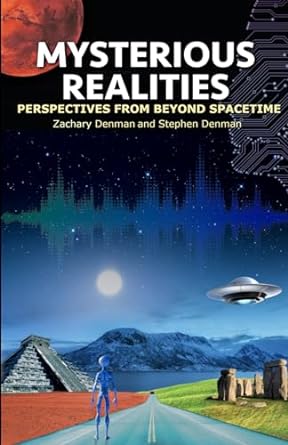What is a Neutron, Neutrino and Nutrition ?
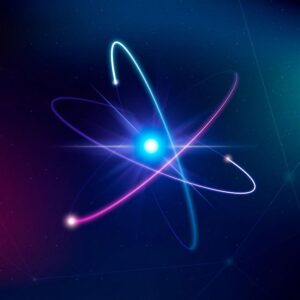
The word “neutron” was coined in 1921 by U.S. chemist William D. Harkins (1873-1951) from the Latin “neutral” (meaning “neither” or “indifferent”) and the suffix “-on”. This combination reflects the particle’s electrically neutral property. Initially, the term referred to a hypothetical combination of a hydrogen nucleus (proton) and an ordinary negative electron. The concept of the neutron as a subatomic particle was first proposed by Ernest Rutherford in 1920, alongside the proton. However, the term “neutron” was not widely used until the 1930s, when the discovery of the neutron in the nucleus of atoms by James Chadwick in 1932 solidified its place in particle physics. The suffix “-on” likely originated from the Greek “ión” (meaning “to go”), which is also seen in other particle names like “ion”.
Neutrino
The word “neutrino” was coined by Italian physicist Enrico Fermi in 1933. Fermi proposed the concept of a neutral, electrically uncharged particle to explain the missing energy and momentum in certain nuclear reactions, particularly beta decay. He derived the term “neutrino” from Italian,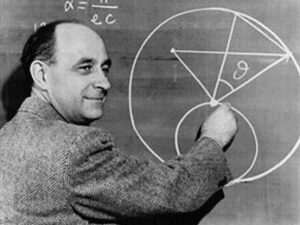 combining “neutro” (meaning “neuter”) with the diminutive suffix “-ino”. In Italian, “neutro” refers to something neutral or having no charge, which was fitting for the hypothetical particle Fermi described. The suffix “-ino” is a common diminutive form in Italian, used to indicate a small or insignificant version of something. “Neutrino”, literally meaning “little neutron”.
combining “neutro” (meaning “neuter”) with the diminutive suffix “-ino”. In Italian, “neutro” refers to something neutral or having no charge, which was fitting for the hypothetical particle Fermi described. The suffix “-ino” is a common diminutive form in Italian, used to indicate a small or insignificant version of something. “Neutrino”, literally meaning “little neutron”.
Neutrinos, small neutral particles, also known as the ‘Ghost Particle’, are constantly flying around us and flowing through us. After photons, neutrinos are the most common particles in the universe. Now, every second, more than ten billion neutrinos pass through your fingertip. Neutrinos pass through almost everything, because gravity has virtually no effect on them. They are also neutrally charged and are therefore not affected by electromagnetic force. Only the weak nuclear forces can affect the neutrinos. That is why we do not notice the neutrinos passing through us.
Click here to Join Members
OPERA experiment
In 2011, the Oscillation Project with Emulsion-tracking Apparatus (OPERA) experiment, a long-baseline neutrino oscillation experiment, observed an anomaly that sparked widespread attention and debate in the scientific community. The experiment was located at the Gran Sasso National Laboratory in Italy which is the largest underground laboratory for astroparticle physics in the world, located in Italy, approximately 120 km from Rome. It is a research infrastructure primarily dedicated to astroparticle and neutrino physics, where particle physics, cosmology, and astrophysics converge. It is important that the neutrino oscillation measurements are made deep in the ground; the earth blocks other particles that fly through the air so that they do not affect the measurements. Since neutrinos easily fly through the earth, almost only neutrinos remain. The experiment detected neutrinos sent from CERN, the European Organization for Nuclear Research, in Geneva, Switzerland, over a distance of approximately 730 kilometers.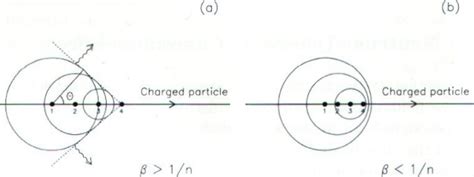
On September 23, 2011, the OPERA collaboration announced that their initial results showed neutrinos arriving 60 nanoseconds faster than expected, suggesting they were traveling faster than the speed of light. This finding was considered anomalous and challenged the fundamental concept of special relativity.
In June 2012, the OPERA collaboration presented new results, which showed that the initial anomaly was likely due to a ‘faulty element’ in the experiment’s fiber-optic timing system. Subsequent experiments and analyses confirmed this conclusion, and the faster-than-light neutrino anomaly was ultimately attributed to a technical issue rather than a fundamental physics phenomenon. The experiment concluded its data-taking period in 2012. Click here to Join Members
Sun is the largest source of neutrinos
For a long time it was thought that neutrinos had no mass at all. Because of this small mass, neutrinos move at almost the speed of light. The largest source of neutrinos that reach the Earth is the Sun. The following reaction equation can be found in the Sun, where the nuclei of four hydrogen atoms (protons) fuse into the nucleus of one helium atom (two protons and two neutrons).
4p+ à 2p+ + 2n + 2e+ + 2ve + energy
For this reaction, two protons (p) must change into neutrons (n). This releases not only two positrons (e+), but also two neutrinos (ve). Positrons are anti-electrons. They have the same mass as a normal electron, but their charge is positive.
In addition to the primary solar neutrino flux, the Sun also produces high-energy neutrinos as secondary particles after absorbing high-energy cosmic rays. These high-energy neutrinos are of particular interest for astrophysical and cosmological studies.
Although electron neutrinos are created in the Sun, some of these neutrinos oscillate into another type of neutrino. There are three types of neutrinos; electron, tau and muon neutrinos. They are named after the particle with which they occur most. An electron neutrino therefore often occurs in nuclear reactions in which electrons or positrons also occur. In 2015, two scientists (Takaaki Kajita, a Japanese physicist, leader of the Super-Kamiokande experiment in Japan and Arthur B. McDonald, a Canadian physicist, leader of the Sudbury Neutrino Observatory (SNO) in Canada) were awarded the Nobel Prize in Physics for the discovery of the neutrino oscillation. Click here to Join Members
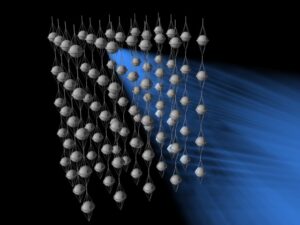 When an electron neutrino comes into contact with tetrachloroethylene (chlorine), chlorine changes into argon (37Cl + Ve –> 37 Ar + e), this allows for us to calculate the amount of neutrino particles. Argon can also be used as a propellant for an ion engine, just like xenon and krypton. SpaceX‘s second generation Starlink satellites use argon for propulsion.
When an electron neutrino comes into contact with tetrachloroethylene (chlorine), chlorine changes into argon (37Cl + Ve –> 37 Ar + e), this allows for us to calculate the amount of neutrino particles. Argon can also be used as a propellant for an ion engine, just like xenon and krypton. SpaceX‘s second generation Starlink satellites use argon for propulsion.
The flux of neutrinos from the Sun at the Earth’s surface is approximately 6 × 10^10 neutrinos (60 trillion) per square centimeter and second primarily consisting of electron neutrinos (νe). This flux is a testament to the Sun’s immense energy production and the importance of neutrinos as a probe of its internal dynamics. These neutrinos can travel through several light-years of solid lead before being absorbed by matter, demonstrating their extraordinary penetrating ability.
It turns out that 1 in 10,000 neutrinos collides and merges with a water particle. With enough volume of water, it is possible to capture a large number of neutrinos. When a neutrino collides with a water particle, a flash of light is released. These flashes are measured and properties of the neutrinos can be determined. Click here to Join Members
Nutrition from the Sun
A person with a body weight of 70 kilograms consists of an average of 28 liters of water. One liter of water contains approximately 55.55 x 10^24 water molecules. When ten billion neutrinos per second pass through your fingertip, and 1 in 10,000 neutrinos collide and merge with a water particle, 100,000 water particles in your body could become ‘neutrinosed’ per second in direct sunlight. Could this be playing a role in the production of Vitamin D-3? When UVB rays from the sun interact with 7-dehydrocholesterol, a precursor molecule present in human skin, it triggers a chemical reaction that converts it into vitamin D3 (cholecalciferol). This process occurs when the skin is exposed to moderate amounts of sunlight, typically between 10 am and 4 pm, when UVB rays are strongest.
The word “nutrient” originates from Latin “nutriens”, the present participle of “nutrire”, meaning “to nourish, suckle, or feed”. This Latin verb is derived from the Proto-Indo-European root “*nu-tri-”, suffixed with the feminine agent suffix, conveying the idea of “to suckle” or “to nourish”. In English, the adjective “nutritive” emerged in the 14th century, meaning “concerned with or pertaining to nourishment”. The noun “nutrient” appeared later, in 1650, initially as an adjective meaning “providing nourishment”.
However, AI states: “There are no direct implications of solar neutrino interactions on human biological processes. Solar neutrinos are high-energy particles that interact very rarely with matter, including human tissue. As a result, they do not have a significant impact on human biological processes.In fact, the search results highlight the extremely low probability of solar neutrino interactions with matter, stating that about 100 billion solar neutrinos pass through a thumbnail every second without causing any measurable effects. This rarity of interaction suggests that solar neutrinos do not have any significant biological implications.”
As we know, everything in this Universe is made up out of energy, frequency and vibration. Neutrinos (energy) prove to be hard to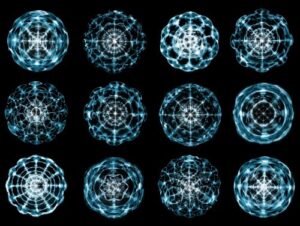 detect because of its oscillating properties (vibration), causing their frequencies to be very unstable. Water reads frequency, its own frequency changes during the ‘reading-process’ and it becomes a carrier and transporter of the frequency. Water has no freedom of choice when it comes into contact with frequencies.
detect because of its oscillating properties (vibration), causing their frequencies to be very unstable. Water reads frequency, its own frequency changes during the ‘reading-process’ and it becomes a carrier and transporter of the frequency. Water has no freedom of choice when it comes into contact with frequencies.
Apparently AI has not been fed the correct nutrients.



